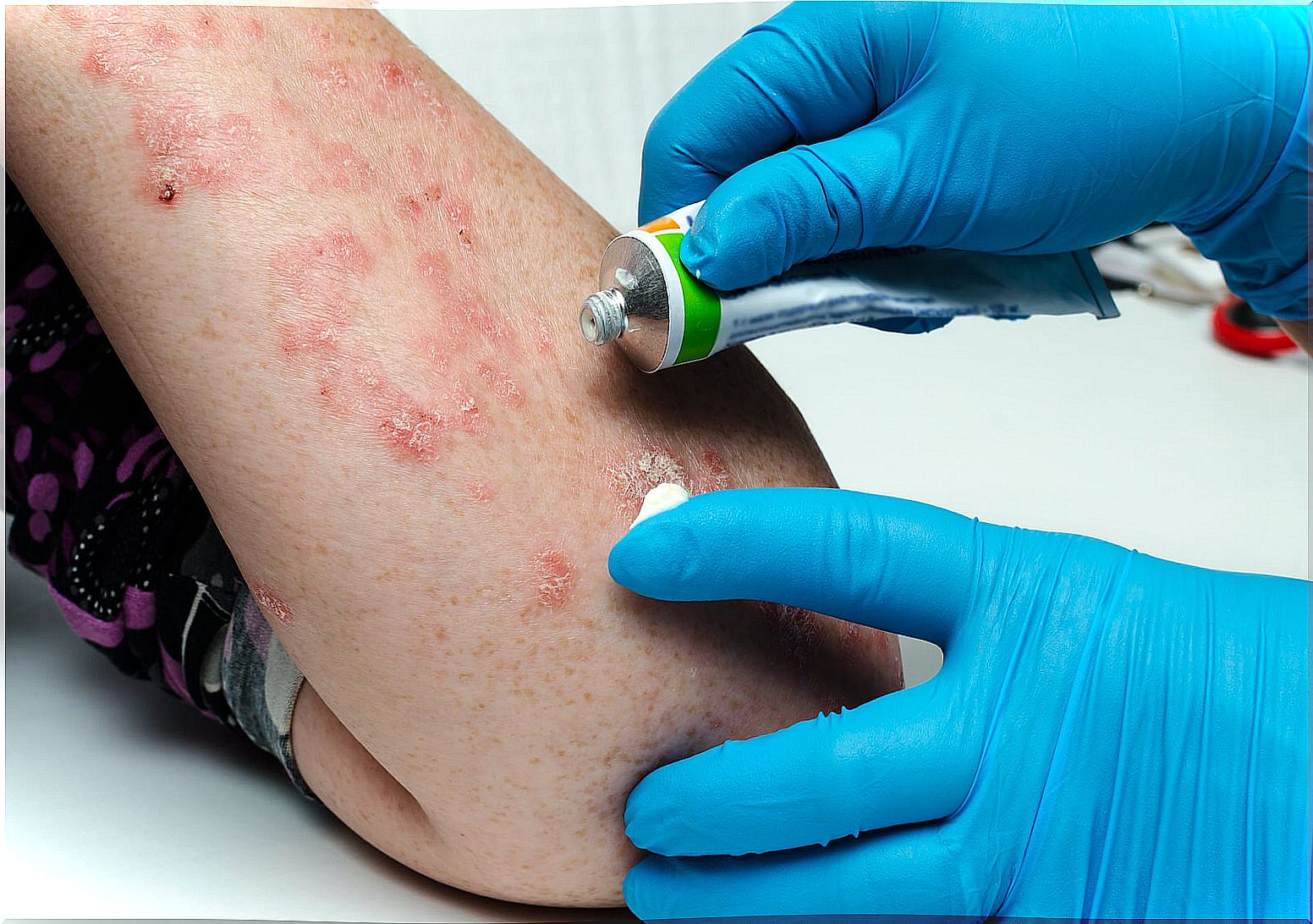Atopic Dermatitis Is Usually A Lifelong Condition, Studies Say
Recent research proves that atopic dermatitis can remain for a lifetime. Despite this, it is possible to adopt preventive measures and treatments to cope with this condition.

Atopic dermatitis is an inflammatory disease of the skin. It is also known as atopic eczema and is characterized by the presence of dryness and 2 types of lesions: reddened with vesicles and scaly areas.
This is the most common chronic skin disease in children. Although there are descriptions of atopic dermatitis from the ancient Roman Empire, the pathology was classified in the 19th century. It took its current name in 1980, thanks to Hanifin and Rajka.
Atopic dermatitis is benign, but its manifestations can affect quality of life. It has been established that it is a condition that can last a lifetime.
Symptoms and complications of atopic dermatitis
The typical symptom of atopic dermatitis is itchy skin. This becomes very intense at times and affects daily life. The lesions, as already noted, can be red and accompanied by vesicles or small blisters, as well as fissures, cracks or scabs.
Other types of lesions called lichenified may also arise . These make the skin thicker and sometimes flake off. In certain people, both types of injuries are present simultaneously or alternate.
Since atopic dermatitis has symptoms similar to those of other skin conditions, it is important to make an accurate diagnosis. The most common complication is the development of infections.
This is because inflamed skin does not defend itself adequately from bacteria, fungi, and viruses. Likewise, itching leads to frequent scratching and this facilitates the entry of germs.

Why is its incidence increasing?
It is estimated that cases of atopic dermatitis have increased between 200 and 300% in the last 3 decades in industrialized countries. It currently affects about 20% of children in those nations.
The high figures lead many to say that an epidemic proportion has been reached in this pathology, despite the fact that it is not contagious.
Everything indicates that it affects urban populations more and that factors such as lifestyle, environment and genetic predisposition influence atopic dermatitis. However, there has been an increase in all types of atopic diseases.
The reduction of infections in childhood has led the immune system to drift towards allergic-type responses. That is the suspicion. Air pollution also influences prevalence.
What do scientific studies reveal?
A study carried out by several universities in the United States, in conjunction with the Department of Biostatistics and Epidemiology, and published in JAMA Dermatology , indicated that children with atopic dermatitis are likely to experience symptoms for their entire lives.
Although this disease can occur at any age, the most common is that it begins before the second year of existence. Up to 80% of children with atopic dermatitis continue to have manifestations until the second and even the third decade of life.
Research published in JAMA Dermatology confirms that atopic dermatitis is not a disease that disappears by the end of childhood. The new findings indicate that it persists and continues to have effects on quality of life into adulthood.
What are the treatments for atopic dermatitis?
In atopic dermatitis there are 2 treatments: one preventive and one rescue for outbreaks. The first must be applied continuously and includes the following measures:
- Gentle hygiene.
- Daily use of emollient or moisturizer.
- Topical anti-inflammatory treatment. Only occasionally and is dermocorticoid-based.
This treatment is effective, but people do not always follow it rigorously. If a very severe outbreak occurs and the measures mentioned do not control it, it may be necessary to go to more specialized approaches, such as the following:
- Phototherapy: it is an exposure to ultraviolet (UV) rays to reduce inflammation of the skin. UVB rays or the association of UVA + UVB are used.
- General drugs: oral corticosteroids and immunosuppressants are prescribed. However, they can have various side effects, so they cannot be used for long periods.

Recommendations for living with atopic dermatitis
Everything indicates that atopic dermatitis is a disease that lasts for life and in which periods of outbreak alternate with others of remission. People who suffer from this condition must be clear about this, especially so that they adjust their lifestyle to it.
The most common irritants are soaps, detergents, perfumes, cosmetics, wool, synthetic fibers, cigarette smoke, dust, and sand. All of this should be avoided, while following basic skin care measures on a daily basis.
It is advisable to avoid extreme temperatures and sudden changes between hot and cold. Moderate sun exposure is beneficial, as solar radiation has an anti-inflammatory effect on the skin.
Atopic dermatitis is not easy to approach
Atopic dermatitis remains a difficult disease to treat in many cases. For this reason, a series of investigations are currently being carried out to find new ways to prevent and alleviate symptoms.
It is very important that a person with this condition adopt a lifestyle according to their condition. The continuous care and the punctual observation of the indicated measures can help the outbreaks to be infrequent and not so severe.









